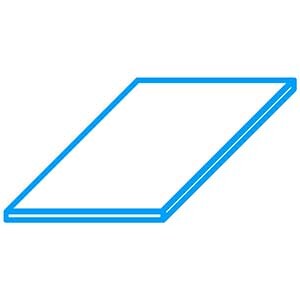Steel Thick Sheets
13 Product(s)



















Coarse plates overview
Heavy plates, often as Quarto or strip sheets referred to, are Steel sheets from a thickness of 3mm, which are characterized by their robustness and versatility. They find wide application in heavy industry, construction and commercial vehicle manufacturing. Produced by hot rolling, these sheets offer an excellent combination of strength and formability, making them an essential material for numerous engineering and industrial applications.
Unique selling points:
-
High strength and resilience: Coarse plates Depending on the type of material, they offer good to excellent performance Strength and are able to withstand high mechanical loads. This makes them ideal for use in heavy machinery and structures.
-
Versatility: Depending on its thickness and stability, heavy plates can be used in a variety of applications, from bridge construction to offshore facilities to pressure vessels.
-
Precision manufacturing: Modern manufacturing processes ensure high dimensional accuracy and surface quality, which makes further processing easier.
Product specifications:
-
Dickenbereich: Heavy plates are typically in thicknesses of 3 mm up to 200 mm available.
-
Dimensions: Standard sizes vary, but typical dimensions are 2,000 x 6,000 mm. Special sizes are possible on request.
-
Material quality: Made from different steel grades such as S235, S355 and lalloyed steels, depending on requirements and application.
-
Surface texture: Depending on requirements, heavy plates can be untreated, with mill scale (scale), blasted and primed or provided with special coatings.
Areas of application:
-
Construction: Use in load-bearing structures such as bridges and buildings.
-
Shipbuilding and offshore: Construction of ship hulls, platforms and other maritime structures.
-
Mechanical engineering: Manufacture of machine parts, cranes and heavy-duty vehicles.
-
Energy: Used in wind turbines, pressure vessels and power plant components.
Why you should choose Coarse plates
Coarse plates offer an unparalleled combination of strength, versatility and longevity. They are the material of choice for projects that place the highest demands on resilience and durability. Their ability to withstand extreme conditions ensures safety and reliability in all applications. In addition, their high dimensional accuracy enables seamless integration into any design, resulting in cost savings and increased efficiency.
Conclusion
Choose heavy plates (quarto plates) if you are looking for a material that meets the highest requirements and is versatile. These sheets are the basis for many industrial and structural masterpieces and guarantee you quality and durability in every application.